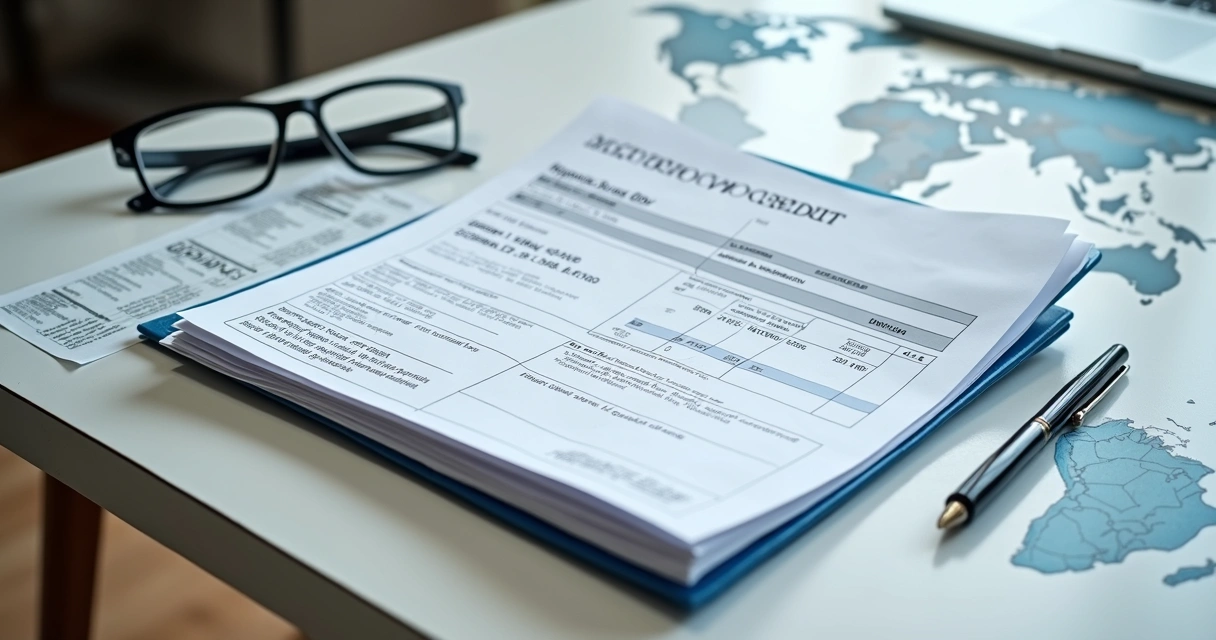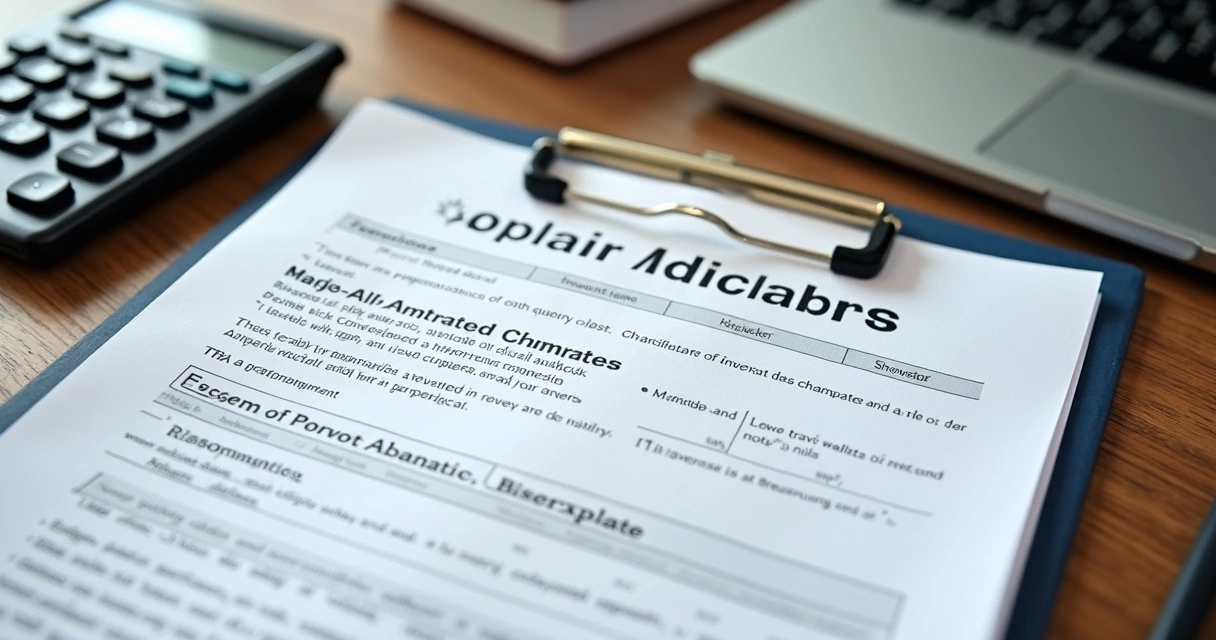I have always felt that chasing the American dream often comes down to a single, overwhelming question: How can I buy a home if I don’t have a green card? Over the years, I’ve seen clients and friends find themselves tangled in worry about their immigration status while longing to own property in the United States. If you’re reading this, maybe you’re wondering the same thing. I want to break down these walls and walk you through what I’ve learned about obtaining mortgage approval as a non-citizen, especially if permanent residency still feels out of reach.
Financing property in the US if you don’t hold a green card is possible—with the right guidance and preparation.
I’ll walk you through types of mortgages available, what documents you’ll need, how to build your profile as a borrower, and share some personal thoughts. Let’s get started.
Your immigration status and mortgage options
Understanding which mortgage choices exist for you starts with defining your residency status. Lenders look at your documentation a bit differently if you are a permanent resident, a non-permanent resident, or an international buyer using an ITIN.

- Permanent Residents: If you have a green card (the official ‘Lawful Permanent Resident’ status), you’re seen as nearly the same as a US citizen in the eyes of most mortgage lenders. You’ll be eligible for a wide variety of conventional and government-backed loans with standard documentation.
- Non-Permanent Residents: Holders of valid work or study visas (like H-1B, L-1, E-2, etc.) may still qualify for mortgages, but lenders might have extra requirements such as proof your visa will last for several years or that you intend to stay in the country long-term.
- Foreign Nationals (no US status): If you don’t have a Social Security Number (SSN), but you do have an Individual Taxpayer Identification Number (ITIN), you are still able to apply for certain mortgages. Some lenders specialize in offering these ITIN mortgage loan programs.
I’ve seen all these scenarios at Heart Mortgage, where the expertise in custom solutions plays a huge role. It amazed me how much flexibility really exists if you look beyond the surface.
Types of home loans for non-citizens
In my years helping clients secure funding in the US, I quickly learned that there’s a big variety in loan types, each with its quirks and benefits depending on your immigration status. Here’s a look at some of the most relevant options if you lack a green card:
FHA loans
The Federal Housing Administration (FHA) insures loans to make borrowing more accessible, even if you don’t have a big down payment or have limited credit history in the US.
- You must have a valid Social Security Number or ITIN, lawful residency in the US, and proof of steady income.
- Down payments can be as little as 3.5% of the home price.
- Typically require you to use the home as your primary residence.
What struck me about FHA loans is how forgiving they can be with credit profiles, as long as other requirements are in place. You can find more about government-guaranteed loans in guides like the complete guide for homebuyers.
VA loans (for military-related non-citizens)
If you or a family member have served the US military and meet eligible criteria, VA loans come with significant advantages: zero down payment, no private mortgage insurance, and competitive interest rates. Non-citizens with lawful status are sometimes eligible, depending on service records.
USDA loans
Designed for rural and some suburban home purchases, USDA loans feature low-interest rates and zero or low down payments. These also demand proof of legal US residency but can be accessible for homebuyers with non-permanent status if they meet income and location criteria.
Conventional loans
These are ‘standard’ mortgages not backed by the government, usually offered by banks and mortgage companies. They generally want a higher down payment (usually 10%–20%) and strong documentation, but they’re open to residents, visa holders, and—through specialist programs—even foreign nationals. If you’re curious about what these programs involve, I’d suggest checking this conventional program overview.
Portfolio and ITIN loans
One of the most eye-opening things for me was learning that some lenders do their own thing: they keep loans “in-house” and create portfolio products. These allow for non-standard borrowers (think: no SSN, alternative income proof, international credit reports) to get approved. ITIN loans are a classic example of this approach. They require a valid ITIN number, reliable income, higher down payments, and sometimes a larger reserve of cash after purchase.
Different paths, same destination: US home financing is possible for many types of foreign buyers.
What documentation do you need?
I’ve noticed that documentation requests vary a lot depending on your type of visa, your banking history, and your credit record—especially if you don’t have an SSN. While the process isn’t painless, knowing in advance what’s required can give you a real boost.
- Proof of residency status: Visa, passport, or ITIN.
- Proof of income: Recent pay stubs, bank statements, tax returns (sometimes from your home country), or employer letters.
- Proof of identity: Passport, national ID card, and sometimes a second photo ID.
- Credit history: US credit report if you have one, or an international credit report. Some lenders want alternate sources like rent or utility bills to show your reliability.
- Proof of assets: Bank statements, investment documents, or savings records—especially for the down payment.

If you don’t have a US credit record, lenders may ask for letters from banks in your home country or request evidence you pay rent or utilities regularly. I’ve once seen approval go through thanks to detailed rent receipts and a letter from a previous landlord. Unusual? Maybe, but far from impossible.
How much do you need as a down payment?
This is the question I get most. My answer is: It depends. For most non-citizens, lenders will require more money upfront.
- FHA loans: As little as 3.5% down, if you have proper documentation and a valid SSN or ITIN.
- Portfolio loans: Often 20%–30% minimum, especially if you don’t have US credit or legal status.
- ITIN loans: Sometimes as high as 20%–25% down needed.
- Conventional loans: 10%–20% is fairly standard.
Bringing a larger down payment to the table increases your options—sometimes it’s really the key to approval.
It’s not uncommon for lenders to get nervous if too much of your money is recent, so having it seasoned in your account for at least 60 days is usually wise.
Building or adapting your credit profile
One of the biggest hurdles I’ve seen for non-US buyers is the absence of a FICO score. But even without it, you’re not locked out. Here are some practical ways to help adapt or build your US credit profile, which matters for those seeking mortgages as foreign nationals or non-permanent residents:
- Consider opening a secured credit card and making regular payments—it’s a small action that starts building US credit fast.
- Keep detailed records of rent, utilities, insurance, or school payments. Lenders may accept these as alternative credit history.
- Ask your overseas bank for a letter outlining your account history and reliability. Some mortgage companies will review international credit.

These small preparations can make a big difference. Over time, even without a green card, a thoughtful approach can get you mortgage-ready. The experience really put into perspective how lack of credit isn’t a dead end—just a detour.
Challenges unique to foreign buyers
I’d be dishonest if I didn’t mention that the journey is tougher when you’re buying from abroad or without typical documentation. Here’s what you should know:
- No Social Security Number (SSN): This means you’ll rely on ITIN and alternative credit checks. Expect slightly longer approval times.
- Higher interest rates: Many, but not all, lenders set higher rates if you’re a non-citizen or don’t have a full credit record in the US.
- More paperwork: Be ready to provide more thorough documentation of foreign income and assets.
- Limited property types: Some mortgage programs specify you must live in the home, while others don’t allow certain types of investment properties.
- Legal advice is helpful: While buying a home as a non-resident is possible, it doesn’t change your immigration status. You may want to consult with a US immigration attorney for clarity.
Reading through guides to US home loans for foreign nationals and statistics from sources such as Federal Reserve reports helps me see how the market’s becoming more open to minority and immigrant borrowers. I recently read that as of 2008, 11.4% of home loans were secured by Hispanic borrowers and 10.6% by Black or African American borrowers, which, while not a massive number, signals shifting tides.
Why choosing an experienced lender matters
This is my honest advice: Work with lenders who have experience with international buyers. Not all mortgage companies are comfortable or skilled in handling unique documents or foreign credit histories. Select partners who offer an open line for questions and are familiar with ITIN, portfolio, or specialty loan programs—that’s where Heart Mortgage stands out. I’ve seen their ability to sort through complex cases become a real lifeline for non-citizen clients.
A knowledgeable partner turns “impossible” into “approved.”
One more thing: Comparing different loan products matters. Lenders might not always show you every option unless you ask or signal that you understand how many routes actually exist. It helps to read through explanatory documents, such as this comprehensive guide to foreign national mortgage loans, before you even walk into your first meeting.
Practical tips to strengthen your application
In my experience, going the extra mile with preparations makes all the difference. Here’s what I advise:
- Gather all possible proof of income and residence, both US-based and international.
- Keep funds in your US bank account for a few months before your purchase—lenders love “seasoned” assets.
- Consider having a US cosigner if possible. It’s not always necessary, but it can increase approval chances and better rates.
- Be open to higher down payments if required. It’s not ideal, but it can open doors that might otherwise seem shut.
- Educate yourself about portfolio products and ITIN loans. Understand what documentation you can realistically provide upfront—every missing piece slows the process.

After all, being thorough and proactive will give lenders the confidence they need to say yes, even if your situation won’t fit the standard box.
Investment properties and other possibilities
If your main goal isn’t just home ownership, but also investment, you have options. US property stays popular among international investors due to its steady returns and legal protections. Here are a few angles:
- You can purchase single-family homes, condos, multifamily buildings, or even vacation homes, depending on the specific loan program.
- Portfolio lenders are often more open to funding investment properties, though stricter requirements apply.
- Some programs do not require residency, so you might qualify even if you have zero ties to the US other than holding an ITIN or valid visa.
I’ve seen first-time buyers invest alongside their quest for personal housing, or purchase vacation homes with the intention to rent them out. The mortgage process can seem a bit stricter, but it’s entirely possible, especially if you’re working with a team that knows the system inside and out.
The real meaning behind US homeownership for non-citizens
Property ownership in the US is layered. Yes, it is about bricks, land, and independence—but for many it’s about security, legacy, sending a message to themselves and their families that their dreams have tangible form. One thing I remind everyone: buying real estate does not grant US citizenship or change immigration status. Still, for many, it’s a powerful first step on their American journey.
There’s real value in knowing your numbers and being prepared. Solid preparation and working with the right advisers will make the process much less daunting. For anyone still doubting, a quick review of the National Mortgage Database reveals just how many routes exist for diverse types of borrowers in the US.
Final words: Take the first step with confidence
If you have read this far, you’re already serious about buying a home in the US—even if you don’t have a green card. No one’s path is exactly the same, but every path starts with understanding your options and building a trusted team. At Heart Mortgage, this means tailored support, clear communication, flexible programs, and above all, honesty. If you’re ready to see how your American dream can become reality without a green card, the Heart Mortgage team is here to guide you through every step of the way. Don’t let status hold you back—reach out, get informed, and take your first step toward your new front door today.
Frequently asked questions
What is property financing without a green card?
Property financing without a green card refers to getting a mortgage or loan in the US when you don't have permanent residency but can provide alternate documents (like a visa or ITIN) and prove creditworthiness through income, asset, and often international credit or alternative records. Many lenders have special programs that accommodate foreign nationals and non-permanent residents, including those who use ITINs instead of Social Security Numbers.
Can non-residents buy property in the US?
Absolutely. Non-residents—including those on tourist visas or without US visas—can both purchase and finance property in the US. The process often involves extra paperwork, higher down payments, and sometimes additional conditions. US law does not restrict real estate purchases by foreigners, so buying is possible; financing just requires more preparation.
How to qualify for a US mortgage as a foreigner?
To qualify for a US mortgage as a foreigner, you must present valid identification (passport, visa, or ITIN), proof of income (either US-based or from overseas), and evidence of funds for the down payment and closing costs. Some lenders also want international credit reports, rental payment history, or alternative proof of financial responsibility. Specific documentation and down payment requirements will vary depending on the lender and your immigration status.
What documents do I need for financing?
Most lenders require: a valid passport or government ID; visa or ITIN (if no SSN); proof of income (such as pay stubs, bank statements, or letters from employers/banks, even from your home country); asset statements (showing enough funds for down payment and reserves); and, if available, a US or international credit report. Alternative proofs of reliability, like rental/utility payment records, can also be accepted by some lenders.
Are interest rates higher for non-resident buyers?
Often, yes—lenders may charge higher interest rates for non-residents or those with no US credit history to offset what they consider additional risk. However, the difference isn’t always dramatic and can sometimes be reduced by offering a higher down payment or showing strong financial credentials. Special programs and the right lenders can help secure more favorable rates, especially when you prepare your documentation properly in advance.





